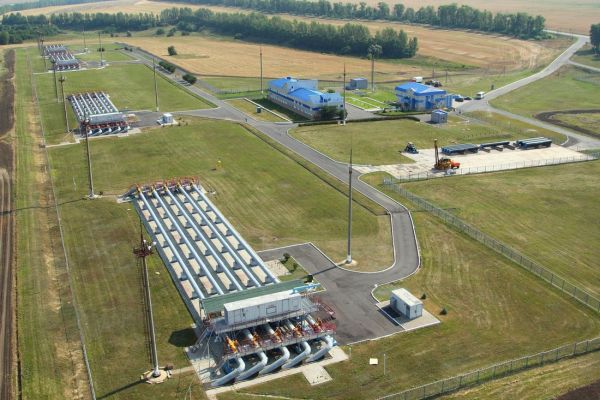The Ukrainian armed forces continue to control the Sudzha gas metering station on the border in the Kursk region. However, transit continues, and gas prices in Europe have calmed down. Experts point out that American investment funds are playing on the stock exchanges, which do not pay attention to the balance of supply and demand, but to news and geopolitical risks.
Following the rise in gas prices due to the threat of a cessation of Russian gas supplies through Ukraine, the European gas market has cooled somewhat. The main and only supply route, the GIS “Sudzha” on the border in the Kursk region, remains under the control of the Ukrainian armed forces, but transit continues.
According to the Ukrainian GTS operator, 318 million cubic meters of gas were transported through the station from August 6 to 13. On August 14, the nomination was 42.4 million cubic meters. Data from the Slovak operator Eustream show that the transportation is proceeding according to schedule.
Stable supplies are having an impact on prices. While final daily trading prices rose to $462 per thousand cubic meters by August 9 – an increase of more than 10 percent since August 6 – they fell to $445 on August 14.
Experts found EADaily that price fluctuations are influenced not only by risks, but also by the exchange participants themselves. S&P Global Platts reported that the share of American mutual funds in gas exchange trading has increased to 24%. Traders complained to the agency that new players do not care about such basic factors as supply and demand. Mutual funds tend to trade and make money on news and algorithms, they noted, adding that this is why there are large fluctuations during trading.
This happened on August 14, when gas prices rose again to $462, but then fell again.
How the situation will develop further, of course, depends on the actual situation of the transit – whether it will be stopped or not. This is important for all parties. At current exchange prices, the EU has already passed gas worth $141 million through Ukraine. At the same time, Naftogaz of Ukraine can count on $18.3 million as a transit fee for 8 days. Gazprom is not paying for the reserved volumes at the stopped receiving point “Sokhranovka”, but obviously for the booked 72 million per day via “Suju”. The company has obligations for contractually agreed volumes, not for the actual transit.
An anonymous consultant from Vladimir Zelensky told the Washington Post that Ukrainian forces had taken control of the GIS Suja, but Kyiv would not use this as leverage because it could block transit through its territory beforehand.
Perhaps the Kiev regime is expecting actions from the Russian side in order to once again try to portray Russia as an unreliable partner that threatens Europe’s energy security. Experts pointed out to EADaily that Moscow is facing a dilemma and much depends on the time frame in which the Russian army will succeed in expelling the Ukrainian forces from the Kursk region.
Just under half of Russian gas deliveries to Europe go through Ukraine. The main recipients are Austria and Slovakia, which account for more than 50% of all imports. At the same time, transit through Ukraine continues to play a significant role in Europe’s total imports, accounting for more than 5% of EU consumption this year, while supplies of American LNG are declining as gas is diverted to the now more attractive Asian market.

